Top stories of 2023 #5: Facebook group warns Napa Valley commuters of traffic tie-ups + Sounds of summer
By Dave Stoneberg
As 2023 draws to a close, we're dedicating the final two weeks to a retrospective countdown of the year's most-read stories. Spanning a broad spectrum of subjects, these pieces mirror the varied curiosities of our audience and pave the way for an exciting 2024. Join us as we revisit these highlights.
Original run date: May 22, 2023
Tim Carl: We welcome Dave Stoneberg to the team. Stoneberg is not only a seasoned journalist and respected figure in the community, but he is also a longtime friend, mentor and motivational speaker to me personally. When I approached him 10 years ago to pitch a column idea for the Star, he looked at me, smiled, and said, "Well, let's give it a shot."
For 14 years Stoneberg served as the editor of the award-winning St. Helena Star, captivating readers with insightful reporting and engaging storytelling. With a rich background in journalism, including notable positions at various publications, Stoneberg's commitment to delivering accurate news and his dedication to community journalism are inspiring. His ability to connect with readers, uplift local voices and shed light on important issues has earned him widespread admiration.
Today we are privileged to present two pieces by Stoneberg that showcase the depth and breadth of his journalistic eye and acumen. The first piece explores a captivating community that has emerged to tackle the challenges of traffic congestion to and from the Napa Valley. Through Stoneberg's keen observations and insightful reporting, he sheds light on the innovative solutions and the spirit of collaboration that drives this community's efforts.
In the second piece, Stoneberg takes us on a heartfelt journey into his own childhood, offering a poignant remembrance. With his masterful storytelling, he invites us into the depths of his past, painting a vivid picture of the experiences and emotions that have shaped him. Through his introspection and lyrical prose, Stoneberg reveals the vulnerability and authenticity that lies at the core of his writing.
Facebook group warns Napa Valley commuters of traffic tie-ups
By Dave Stoneberg
CALISTOGA, Calif., — Snow fell in Hidden Valley Lake, Lake County, three times this past winter — on Monday, Jan. 2; Friday, Feb. 24; and Monday, March 6. It was just a light dusting of snow the first and third times, but wild weather made that Friday in February a real doozy.
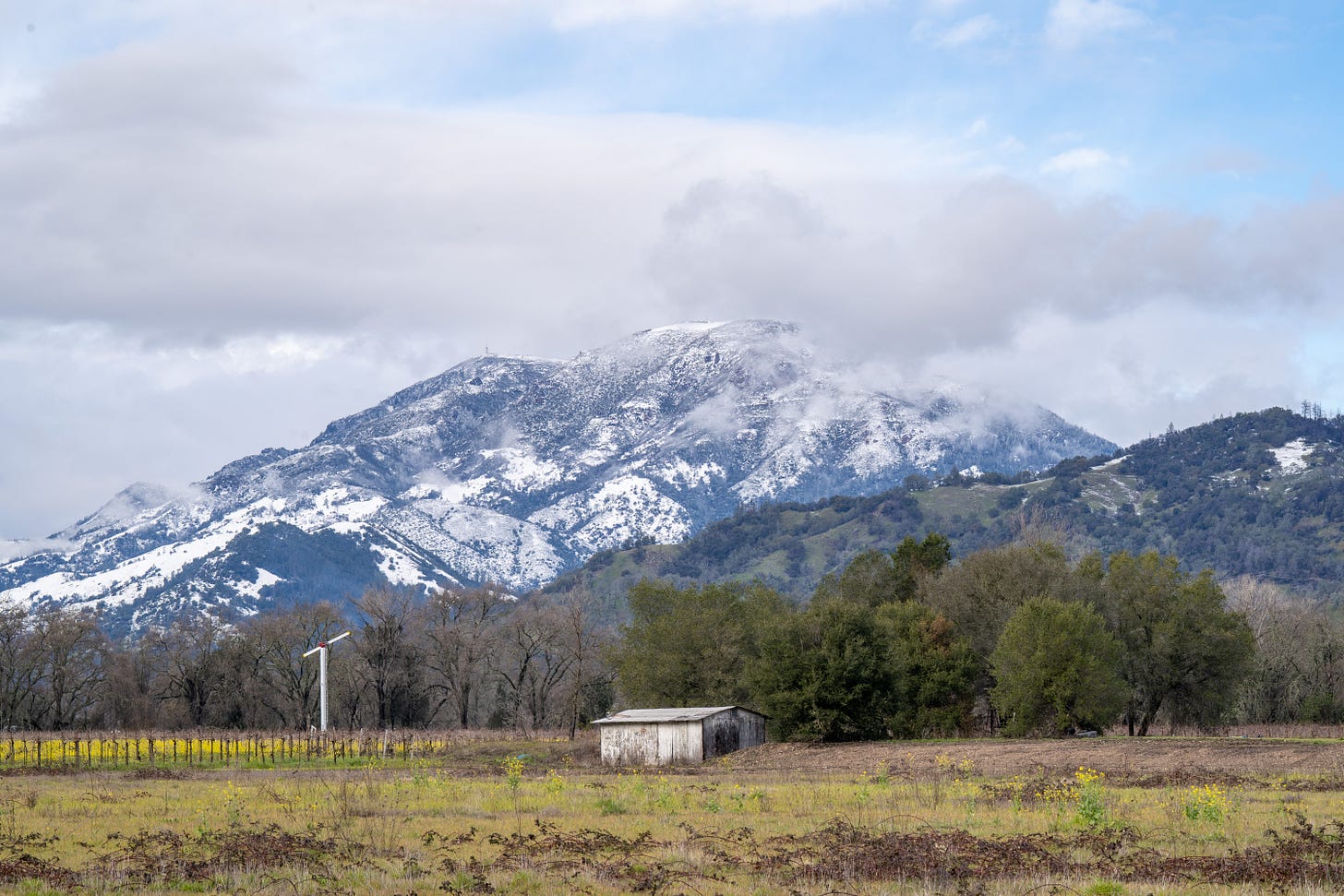
According to our home rain gauge, that day 1.17 inches of rain and snow fell in 24 hours. The heavy, wet snow broke branches on trees, and the wind howled, breaking even more. The severe weather closed the two main roadways out of southern Lake County, Highway 29 over Mount St. Helena and Howell Mountain Road to Angwin.
“It was like 4:30 in the morning and my Caltrans guy calls me and he’s like, ‘I’m really sorry I’m calling you so early, but the road is going to be closed for at least a couple of days,’” said HVL resident Judy Wink. “Then I heard him pause, and then I heard him go, ‘Oh!’ I asked him if he was OK, and he said another tree came down right here (next to him.) He added, ‘We have over 100 trees to clear before we can get that road open.’”
Wink’s first thought was to put up a post to let people know what was going on.
“That’s the kind of stuff you don’t see coming,” she said.
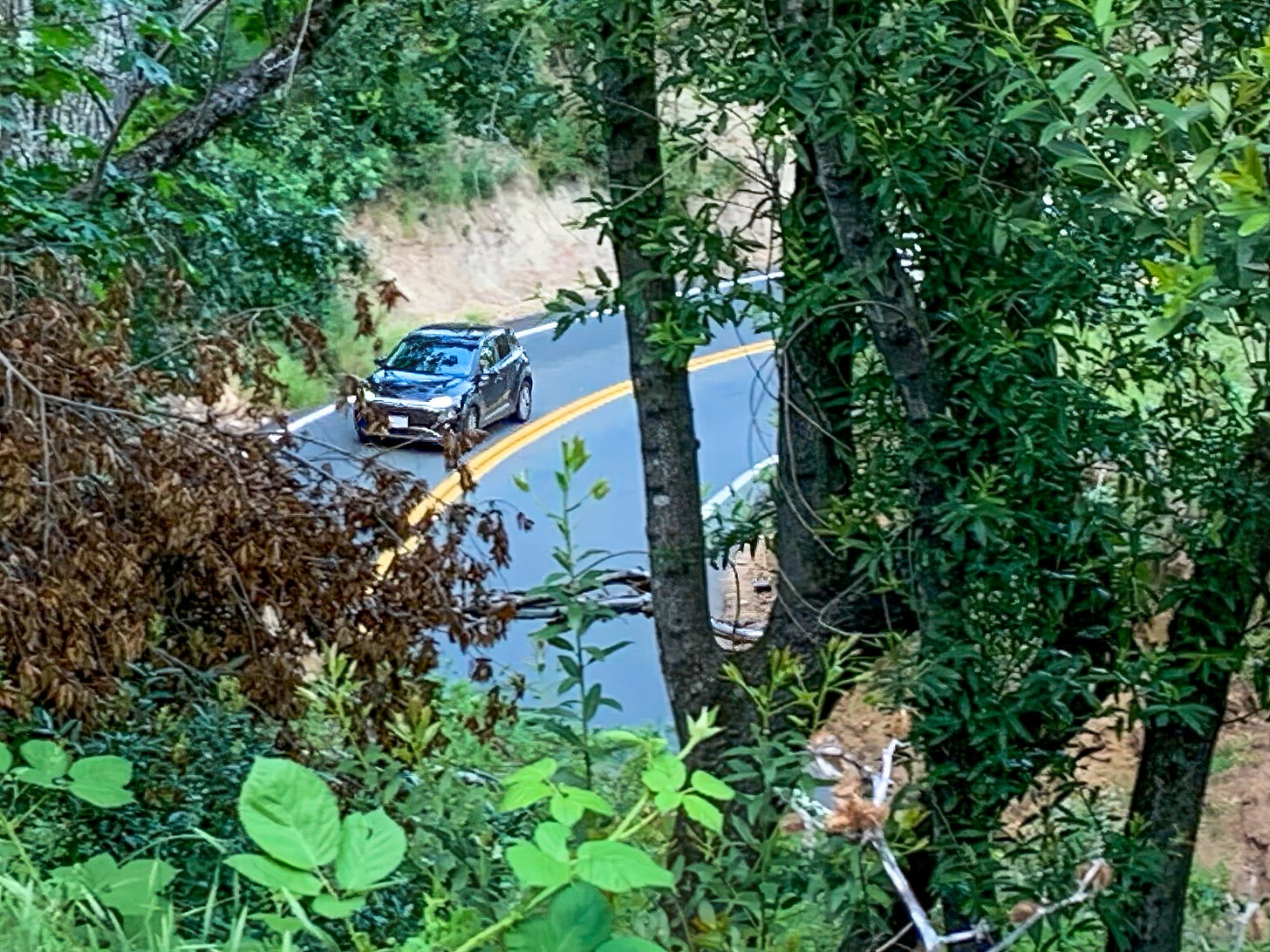
Facebook group is born
Wink is co-administrator of a Facebook group called “St Helena Mtn Commuters,” with a mission to use crowdsourcing to communicate helpful information to help get everyone to their destinations safely. On the site are updates and alerts about hazardous conditions, road closures, delays and accidents. Information on the site includes conditions on Highway 29 and a variety of other area roads that include 53, 20, 175, Hopland Grade and Butts Canyon in Lake County and Highway 128, Porter Creek, Howell Mountain and Mark West, all in Napa County.
Wink, who started the group discussion in January 2017, said the group currently includes more than 11,400 people.
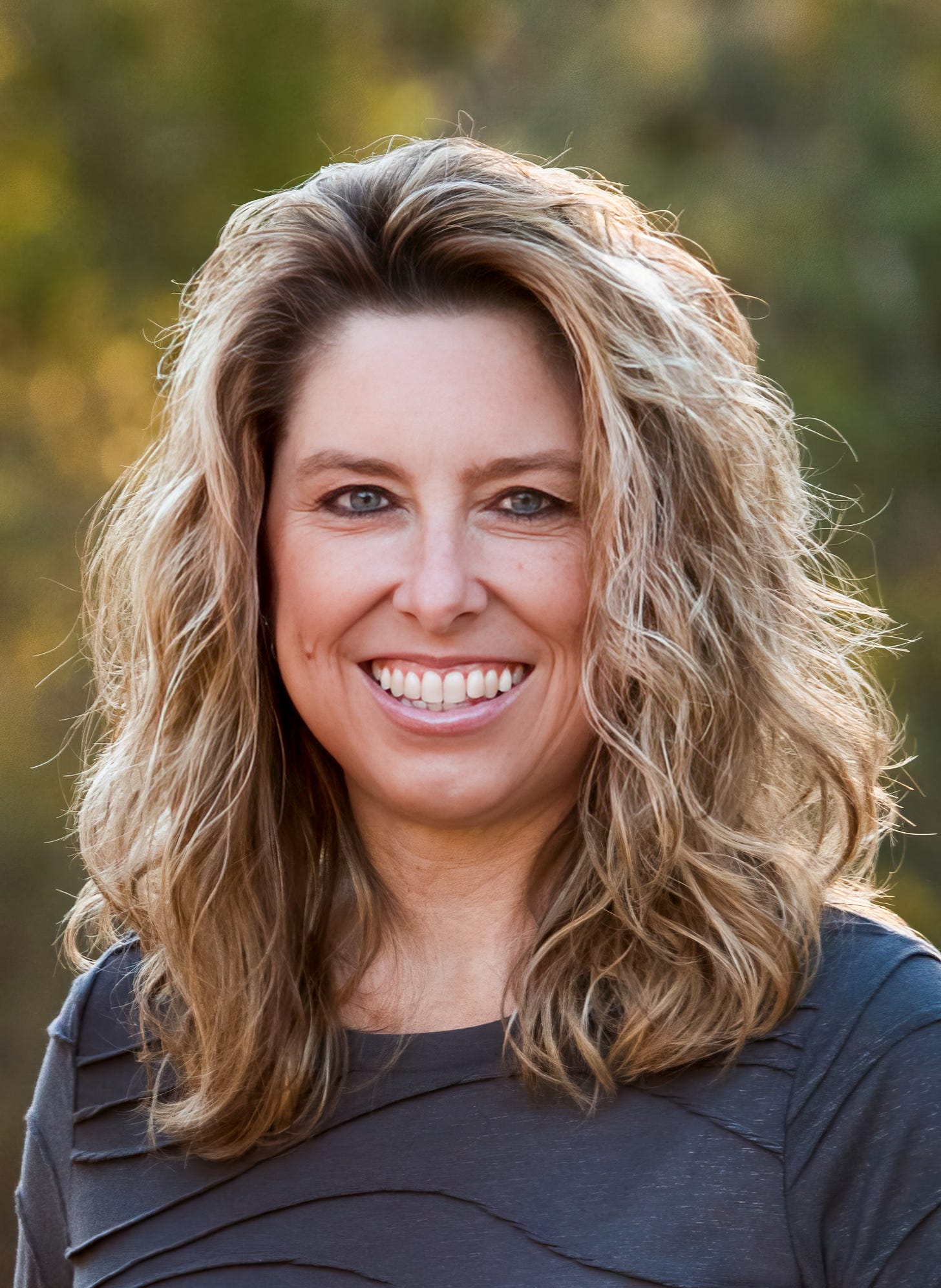
Why should those living and working in the Napa Valley care about the snow in February that closed state Route 29 over Mount St. Helena? Because those commuters are the lifeblood of the Napa and Sonoma valleys — they are customers, employees and those traveling over the mountain to shop, visit friends, partake of wineries and restaurants, and go to doctors’ appointments.
In mid-May, with the continuing warm weather, bad weather closing Highway 29 is past for this year, but accidents can happen at any time. Those posts are still important to commuters. Recently, for example, one person posted, “Use caution if coming down the mountain, 35-49 y/o (year old) man dressed in blk (black) walking towards traffic. Just up from Tubbs (Lane.)”
A few days ago, a woman wrote, “7:45 p.m., Caution: My car broke down near MM 44.28 on 29 on the Calistoga side. Worst place possible but I’m pulled over as far as possible on the side of the road waiting for a tow truck to come tow my car.” Later she posted an update: “All clear! Thanks to Pope Valley Garage and Towing for the rescue!”
Not everything on the site is disastrous. Here’s another recent post: “Left HVL at 6:42. Pulled into Oliver’s on Montecito at 7:30 for the best cup of cappuccino. Heavy traffic — but moving swiftly. Beautifully refreshing morning. Had the window open all the way down — until the edge of SR. FOG!”
Wink said the effort to document traffic conditions for commuters in real time began when she was commuting over Mount St. Helena, as so many people do.
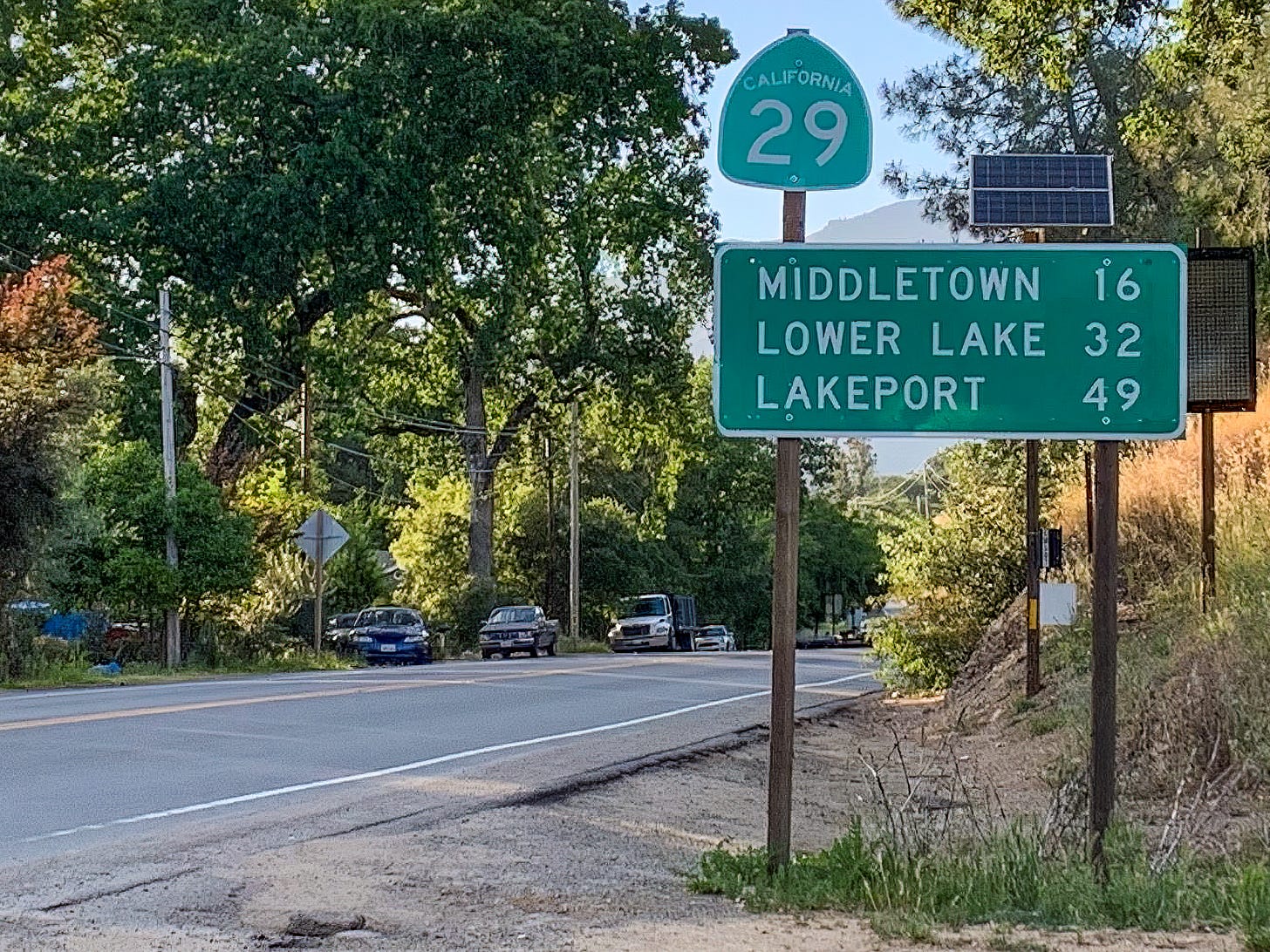
“There always seemed to be problems with a main artery like Highway 29 over the mountain,” Wink said. “I started recognizing there were more and more group pages being created on Facebook, and I thought we needed something like this. I was hoping it would be helpful, using crowdsourcing to all communicate together and let each other know what was happening or not happening, and it just grew from there.”
Highway 29 can often become a racetrack, with some people speeding their way either to work or back home, passing on double-yellow lines, tailgating and driving dangerously. At about 9:15 a.m. Sunday it was a literal racetrack as the drivers of a dozen or more Porsche cars, all covered with logos and team names, tested their cars on the winding road, heading into Lake County.
One of the Highway 29 commuters is Jade Hendry, an enologist for Venge Vineyards on the Silverado Trail, just south of Calistoga, near Dunaweal Lane. During the off-season Hendry works four 10-hour days; during the harvest in the fall she works six days a week. She has lived in Hidden Valley Lake for the past 14 months.
When asked about her experiences of commuting to Calistoga, she said, “Surprisingly nice, actually. I rented at first in Pope Valley and drove down Deer Park, and there was really terrible traffic sometimes.” Howell Mountain and Deer Park roads are both two-lane roads with virtually no passing lanes. Compare that to Highway 29, which has numerous passing lanes in both directions, so Hendry can “drive like a grandma and people can pass me.”
She added she has only been late to work twice because of a vehicle accident and was late on Friday, Feb. 24, because of the snow. It was the day Venge bottled their wine, and all hands were needed at work.
Hendry, who left an hour early to get to work, was a half-hour late because she had to take a round-about way to work. Instead of Highway 29 over Mount St. Helena, which was closed, she had to take Butts Canyon Road and drive to Pope Valley. She discovered Howell Mountain Road over Angwin was closed, so she drove Chiles and Pope Valley Road to Sage Canyon Road, which took her past Lake Hennessey to Silverado Trail in Rutherford, south of St. Helena.
The beginning of Highway 29
Highway 29 measures 105.6 miles from Interstate 80 in Vallejo to State Route 20 in Upper Lake. It transverses Solano, Napa and Lake counties and was built in 1934. Earle W. Wrieden was a Middletown resident who served as Lake County supervisor for many years. Sitting in his downtown Middletown office in the early 1980s, he was fond of telling stories of years gone by in his hometown. One of them was a time when disaster was averted, but just barely. One summer day, he said, a community picnic was held with numerous picnic tables placed under a large oak tree. After the people left, a large oak branch fell onto the picnic tables, smashing them to smithereens.
Wrieden was clearly proud of his work in securing state funds to improve the highways around southern Lake County, including Highways 29 and 175, which starts in Middletown, goes through Cobb Mountain and Loch Lomond, and ends up south of Kelseyville.
In Napa County, Highway 29 goes through the center of Calistoga and St. Helena, so it can be busy with commuters. In the Napa Valley most commuters head north from Napa in the morning and return south in the late afternoon and early evening.

Sean Scully, former editor of the Napa Valley Register, said he commuted from his home in Calistoga to the newspaper office in Napa for eight years, and during that time the traffic got progressively worse.
On a recent Friday night, Scully left Calistoga and headed south to Napa along with a lot of other commuters. Asked about his experience on Highway 29, he said, “I would barely call it a highway at some times of the day. It’s gotten so bad over the last 10 years, even in the non-commute directions. It took me an hour and five minutes to go 26 miles.”
He said traffic on the county’s other north-south route, the Silverado Trail, isn’t a whole lot better and is 4 to 5 miles farther. Besides, if you don’t get on the trail at either end, you’re going to have to wait because “there’s a continuous line of traffic.”
So what’s the solution?
“Find a job where you can work from home,” Scully said. “I’ve done that for the past year and a half. There’s a lot fewer miles on my car.”
In early October 2017 the Tubbs Fire broke out — at the time the most destructive wildfire in California’s history. It destroyed 5,643 structures, mostly in Sonoma County, killed 22 people and raged from Oct. 8 to 31. It was started by a private electrical system in Calistoga near Tubbs Lane and burned 36,807 acres. The cost of the damage was $1.3 billion.
Wink said her Facebook group “became sort of ground central about communicating about that fire. Her son, Dale Hoskins, who was a police officer for the Calistoga Police Department, was the first responder to that call.
“I was immediately connected to what was happening,” she said. “The Atlas Fire (in southern Napa County) had already started, but the Tubbs Fire started at 10:30 that night.”
Hoskins called Wink shortly after he notified dispatch. He told his mother, “Mom, things are really bad, but I’m going to leave you on speakerphone. I’m just trying to evacuate as many people as I can.”
Wink was on the phone for almost two hours, and she realized a lot of people – her friends from Lake County – were going to wake up and need her help trying to navigate their way to work. She said the group “really grew during that time. It caught on that this is a good way to find out information.”
It remains that way today.
Wink said she grew up driving the mountain. The family moved from St. Helena to Middletown during her high school years. After graduating from Middletown High School in 1986 and spending 14 years on the East Coast, she moved back home. She commuted over Mount St. Helena from 2014 to December 2022, when she started her own accounting business.
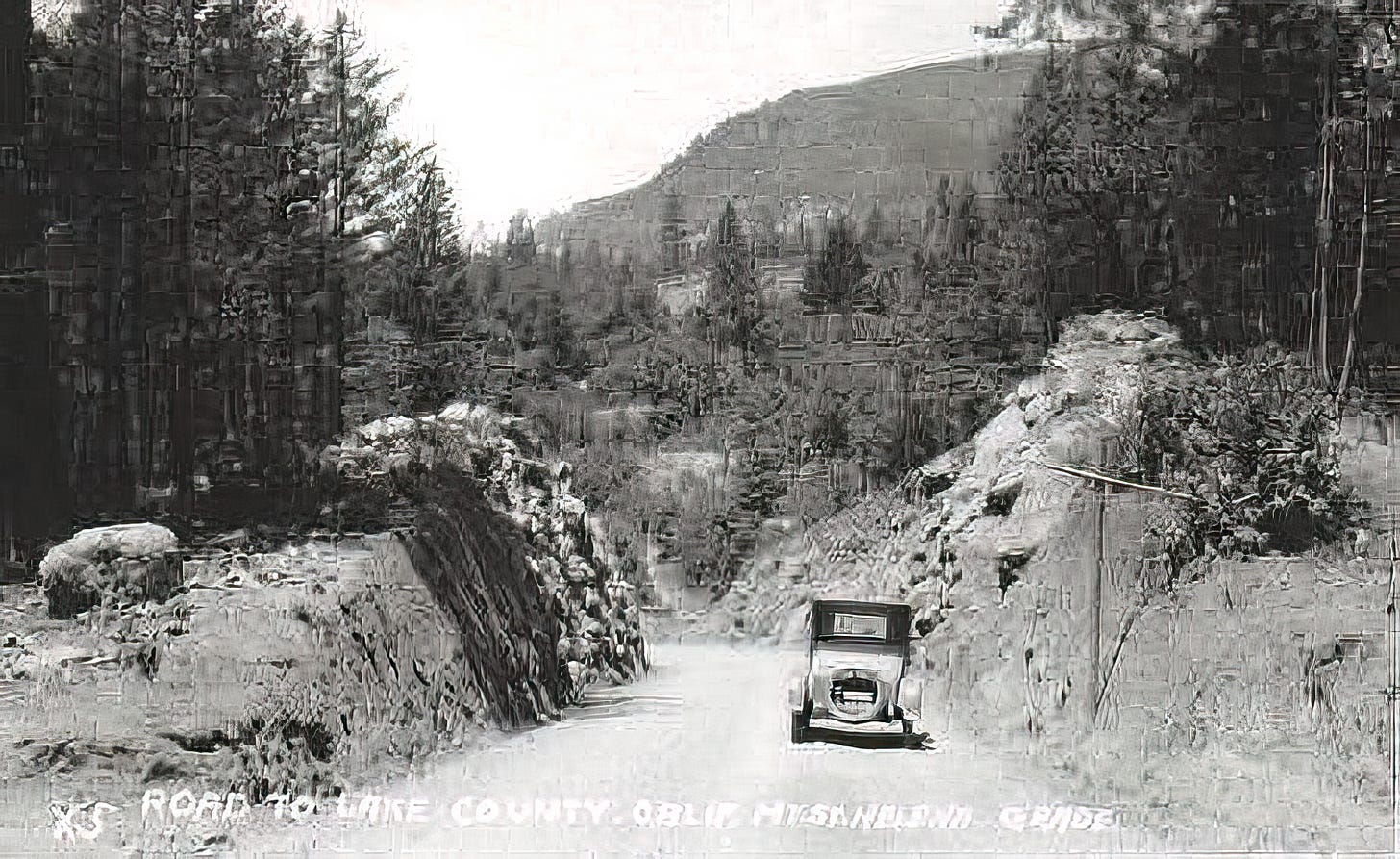
Scanners always on
At home the police scanners are always on — something she is used to since her parents, Bill and Sylvia Wink, listened to scanners all the time.
“We’ve always been connected to first responders; we’ve had a lot of them in our family,” she said, including her brother Mike, who is a battalion chief with Cal Fire. Currently Wink has 50 channels on the scanner that sits by her chair. She has three scanners at home as well as one that she takes with her in the car to see how close a fire is. Having scanners at home and on “is just part of our nature,” she said.
“You go to my Mom’s house and the scanner is on. She’ll call me and you can hear the scanner on in the background.”
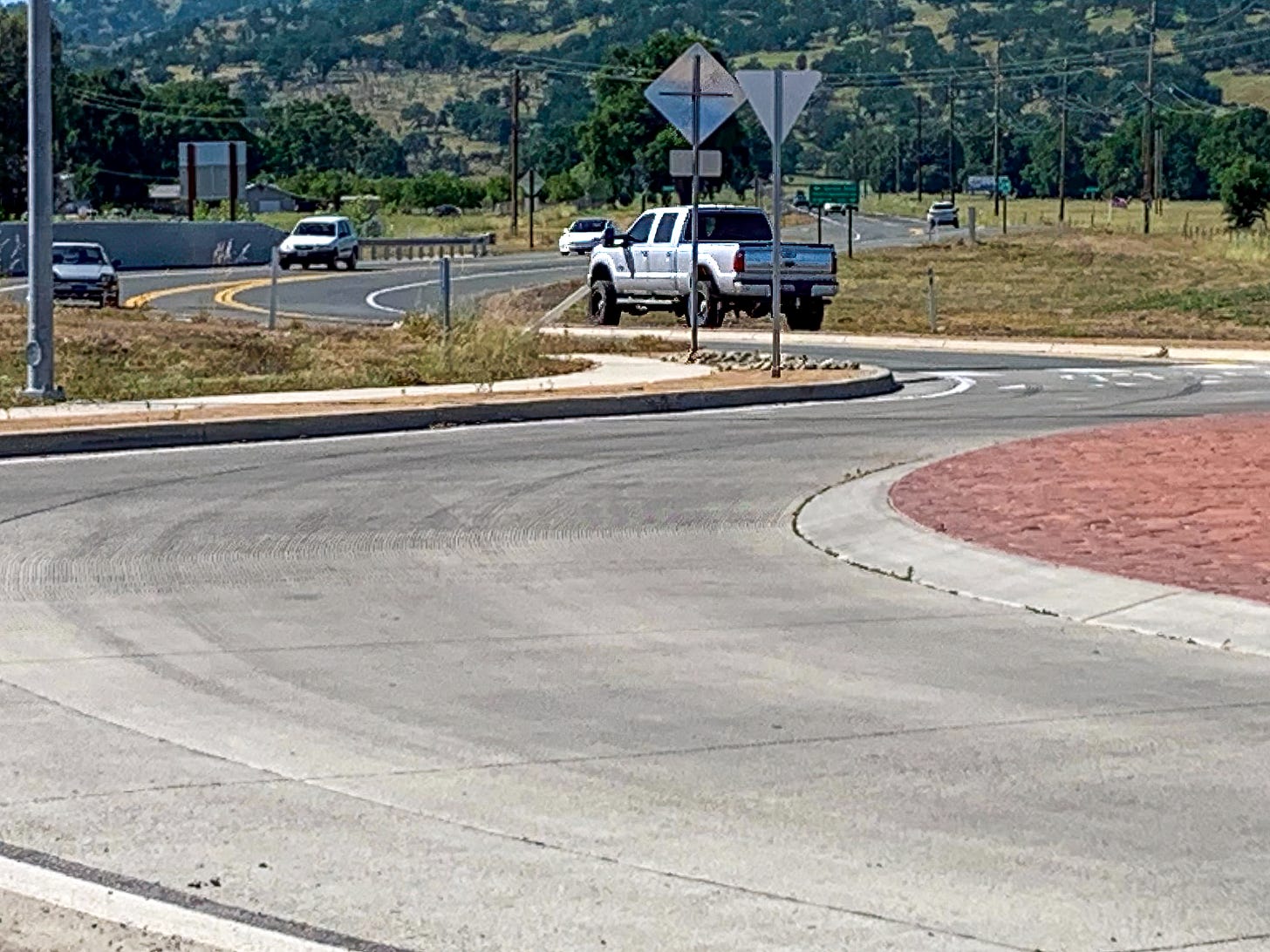
Wink was listening to the scanner the day of the Valley Fire – Sept. 12, 2015 – and she knew it was really bad because Cal Fire personnel were yelling into the scanner, trying to get people to evacuate before the wall of flames swept through the area.
“You don’t hear that, and it was terrifying,” she said. “We drove out of here with fire all around us. Everybody’s got a similar story. We were just trying to get the hell out of here.”
Smoke check
In addition to the Facebook commuter page, Wink also runs a smoke-check page for local fires and became connected to Watch Duty, which is a new fire app created by software developer John Mills. It began with Cal Fire’s LNU Lightning Complex fires in 2020, and the alert system grew from there, now reporting on fires in California, Oregon and the Midwest.
Sounds of summer: mowing lawns, riding bikes and driving to New York
By Dave Stoneberg
A gas-powered lawn mower is one of the sounds of summer. It’s Saturday morning, and one of my chores is to mow the lawn, both front and back. It is 1965, I’m 10 — almost 11 — years old and we live at 525 N. Main St. in Naperville, a western suburb of Chicago. I share an upstairs bedroom with my younger brother, Peter, and we sleep in bunk beds. Our older brother, Bill, has a room of his own, and Mom and Dad are in the third bedroom.
The lawn mower is powered by a Tecumseh engine. I remembered that name because it was the name of the Shawnee chief and warrior. Later on in our boyhood, after we moved to a larger house, Dad bought a go-kart, also with a Tecumseh engine. It was really fun to drive down the street, turn around in a cul-de-sac and return home.
There was a certain precision in cutting the lawn. You go could back and forth, you could go around in an oblong circle, ending up in the center of the lawn, or you could cut the lawn in a diagonal pattern. Our across-the-street neighbor liked to cut his lawn several times on a Saturday morning, making it look like a well-groomed baseball infield. For my brothers and me it was hard enough and took enough time to just cut it once. Because it rained frequently during the summer, the lawn needed cutting nearly every week, so we got pretty good at it. (At least we thought so.)
After cutting the lawn, it was time to play — maybe army with a neighbor, Paul, who was younger than I was and lived across from our backyard. His sister, Karen, celebrated her birthday one day after I did, although she was a year older than I was. In 1965, I had just finished fifth grade at Naper Elementary School. Bill was in the sixth grade, and Peter was in the fourth. My fifth-grade teacher was Mr. Richardson, who loved science. One of his experiments was to show us with a horizontal glass tube how the smoke from cigarettes coated our lungs. It was brown and disgusting. I never did smoke, even though both of my parents and my brothers did. At the end of the school year, everyone in our class chipped in to buy Mr. Richardson a turtle. I don’t know whether he wanted a turtle, but he seemed pleased to receive it on one of the last days of the school year.
During the summer my brothers and I could ride our bikes to Centennial Beach, a huge concrete swimming pool that was built by those employed in the Works Progress Administration during the Great Depression. My friend Frank and I had the same bike: a Schwinn Stingray with high handlebars and a white banana seat. Our bikes were painted blue, and when we rode them through the cow tunnel underneath the Burlington Northern Railroad tracks they looked purple. I loved that bike — it was so cool — and I put a lot of miles on it.
Later, after spending weeks and months researching what was the best bike, Peter bought a proper 10-speed bike, a French Motobecane with sew-up tires. My bike after the Schwinn was also a high-end 10-speed, a Raleigh, on which I rode many miles. One time Dad and I went out for a ride in rural Indiana, and we rode over the freeway on an overpass. We were surprised when a sign said we were 10 miles from where we had started. What a long way that seemed to be.
Next year, I would go to junior high – what is now called middle school — at Washington Junior High, which wasn’t too far from our house.
Dad loved to play golf and did so on the weekends. Many Saturday and Sunday mornings he would play a round of golf with his friends, including Bill Harkins and Bert Pelling. In those years I would carry Dad’s clubs as a caddy and make maybe $5 a round. If I carried clubs for both Dad and Bill, I would make $10, which seemed like a lot of money at that time. The only way carrying two golf bags was possible was because Bill had a light cloth bag, not the larger leather Wilson bag that Dad had.
That summer we drove from Naperville to New York to see the 1964-65 World’s Fair. One of Dad’s friends, Bob Hilton, had a red convertible that he needed to get to New York. Since Dad loved a road trip, our family vacation was to drive to New York and later to the Jersey shore to visit Aunt Charlotte (Dad’s sister) and Uncle Kim and their children. We flew home after two weeks. What a great time we had!
Why am I thinking about summer, mowing lawns and vacations? It is heating up – it was in the high 80s all this past week – and summer is right around the corner. But mostly because yesterday I mowed the lot next to our house, back and forth and only once. It isn’t a proper lawn but more a patch of weeds, which is pretty enough when the grass is green, although there are some bare spots. Because of this winter’s rains, I’ve had to cut the lot twice, and I still need to use a Weed Eater to get at the grass growing around some rocks at the edge of our property.
I’m glad that while I was mowing the weeds, I was able to remember growing up, mowing proper Illinois lawns and dreaming of summer with its annual vacations. Thanks, Mom and Dad, for making those times so very special.
Dave Stoneberg is an editor and journalist, who has worked for newspapers in both Lake and Napa counties.







Yet another fun and nostalgic article.